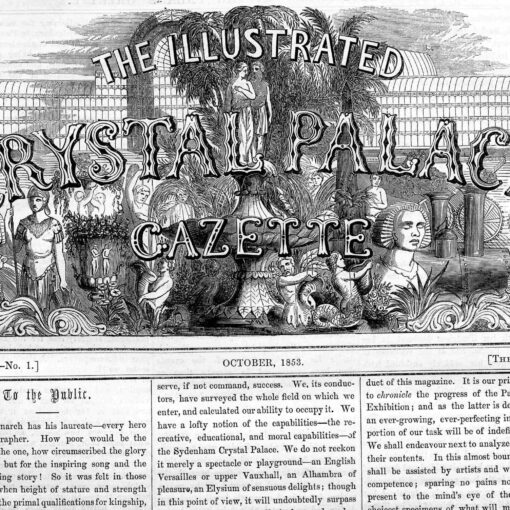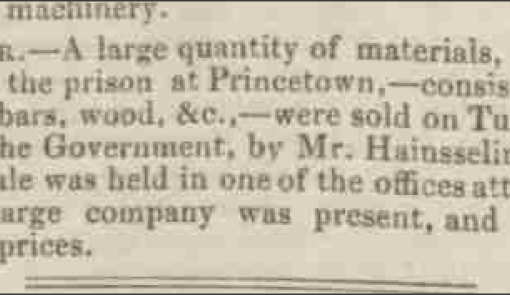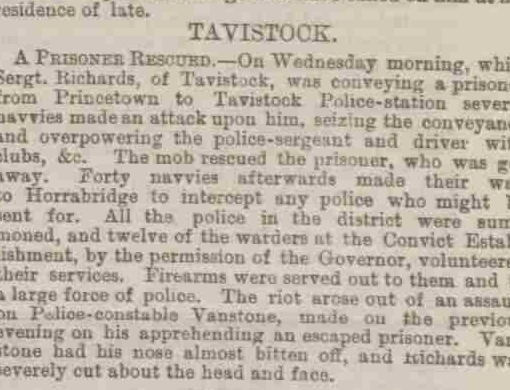The handling of meat in Britain during the 1800s was an area of significant concern due to the lack of comprehensive food safety regulations, leading to widespread public health issues and increasing media coverage of scandals and legal cases.
Thame Gazette – Tuesday 17 September 1867

A butcher in Walworth was fined £10 or faced a month in prison for selling meat deemed unfit for consumption, following a complaint by a customer and an inspection by a sanitary officer.
Bad Meat
John Bishop, a butcher of Richmond Street, East Lane, Walworth, finally appeared before Mr. Partridge, at the Lambeth Police Court, on Saturday, at the instance of Mr. Bell, Sanitary Inspector to the Newington Vestry, on a charge of having unlawfully exposed for sale certain meat which was unfit for food, whereby he was liable to a penalty not exceeding £10.
Henry Silvester, a labouring man, living in St. Paul’s Place, Westmorland Road, Walworth Road, said he sent a girl to the defendant’s shop to purchase a piece of steak and a chop. On receiving the meat, he found it was in such a condition as to be quite unfit for food. He sent it back to the defendant, but he refused either to change it or return the money, and afterwards told the complainant that he was not aware of its being in the condition described, and further pointed out the low price at which the meat was sold. He then took the meat to Mr. Bell, the inspector.
Mr. Bell said when he examined the meat, which was within a short time after it was purchased, he found it green and quite unfit for food. He sent a message to the defendant, but he took no notice of it.
Mr. Partridge said it was a good thing they had such an inspector in the district as Mr. Bell. This he considered a very bad case, and ordered the defendant to pay the full penalty of £10 and costs, or be imprisoned for one month.
Context of Meat Handling in 19th Century Britain
- Food Safety and Sanitation Standards:
- The 19th century was marked by rudimentary practices in food preservation and hygiene.
- Refrigeration technology was virtually non-existent, and meat was typically stored in open-air markets, leading to rapid spoilage.
- Adulteration and sale of spoiled or tainted meat were widespread problems due to a lack of stringent legal oversight and financial pressures on butchers and traders.
- Urbanisation and Health Risks:
- Rapid industrialisation and urbanisation in Britain increased the demand for affordable food in growing cities like London, Birmingham, and Manchester.
- Crowded urban centres often had poorly regulated markets, with inadequate waste disposal and drainage, exacerbating the spread of disease.
- Sanitary Reform Movement:
- Growing concerns about public health, fuelled by high mortality rates from diseases like typhoid, cholera, and food poisoning, led to the emergence of sanitary reformers advocating for better food safety practices.
- Organisations like local vestries (municipal authorities) began appointing sanitary inspectors, such as Mr. Bell in the article, to monitor food quality and public health.
News Coverage of Meat Handling Issues
- Focus on Public Scandals:
- Newspapers frequently covered cases of food contamination, particularly focusing on unscrupulous butchers selling rotten or adulterated meat, as highlighted in the case of John Bishop in Walworth.
- These reports aimed to raise awareness among the public about the dangers of consuming tainted food and to pressure authorities to enforce stricter regulations.
- Influence of Journalism:
- The rise of the penny press in the 19th century made newspapers more accessible to the working class, who were often the most affected by poor food quality.
- Sensationalist headlines and detailed court case reports, like the “Bad Meat” story, played a pivotal role in exposing malpractice and holding traders accountable.
- Educational Campaigns:
- Newspapers sometimes ran educational columns advising readers on how to identify spoiled meat or avoid dishonest traders, reflecting the growing demand for consumer protection.
Legislative and Social Changes
- The Adulteration of Food and Drugs Act (1860, 1872):
- Cases like the one described led to increased advocacy for food regulation, culminating in the passage of the Adulteration of Food and Drugs Act in 1860.
- This was one of the first laws in Britain aimed at penalising the sale of contaminated or adulterated food and ensuring food quality standards.
- Role of Inspectors and Enforcement:
- By the mid-19th century, local councils employed inspectors to check the quality of food sold in markets and prosecute offenders.
- However, enforcement was uneven, and many offenders, especially in poorer areas, escaped punishment due to lenient penalties or lack of resources for proper inspection.
- Public Awareness and Consumer Power:
- The media’s role in highlighting food safety issues empowered consumers to demand better practices, laying the groundwork for modern consumer protection movements.
Conclusion
The case of John Bishop is emblematic of broader issues in 19th-century Britain regarding the handling of meat and the slow development of food safety standards. Media coverage of such incidents helped shed light on these problems, contributing to societal and legislative changes that gradually improved public health and food regulation. By the late 1800s, Britain began to implement more structured systems of inspection and hygiene, driven by public pressure and increased government intervention.
Importance of Historical News Articles for Historians and Genealogists
Old newspaper articles, such as the one transcribed, are invaluable sources for historians and genealogists alike. They offer detailed, contemporaneous accounts of incidents that provide insights into the social, economic and technological conditions of the time.
- Historical Context and Public Reaction: Articles like these help historians understand life at the time in Britain.
- Personal Details and Genealogical Value: For genealogists, old news articles can be a treasure trove of information. They often include names, addresses, and occupations of victims, offering a glimpse into the lives of ordinary people who might otherwise be absent from historical records. It lists the names of those involved, potentially aiding descendants in tracing their ancestors.
- Insight into Early Journalism: The detailed narrative style of old British newspapers offers insight into the era’s journalistic practices, which favoured dramatic and emotive language to captivate readers. The vivid descriptions of events also reflect the public’s fascination and fears of the era.
Free to use British Newspaper Research Service
I search historical articles to locate mentions of your ancestors—whether they were involved in notable events or simply part of the everyday life reported in these newspapers. If relevant articles are found, I deliver them to you in a PDF format at no cost.
If I find articles, they’ll be sent to you in a clear, organized PDF. If not, you’ll be informed right away. See here.




